On writing identity, experiencing joy, and representation
This Disability Pride Month, a look at why we need more creators with disabilities in contemporary literature and cinema
Released in 1990, Firdaus Kanga’s semiautobiographical novel Trying to Grow should have ideally resulted in a surge of books at the intersection of disability and sexuality. However, in business speak, there wasn’t any “market” for them. Publishing houses could have commissioned more such titles but perhaps they were blinkered by the prevalent ableist thinking.
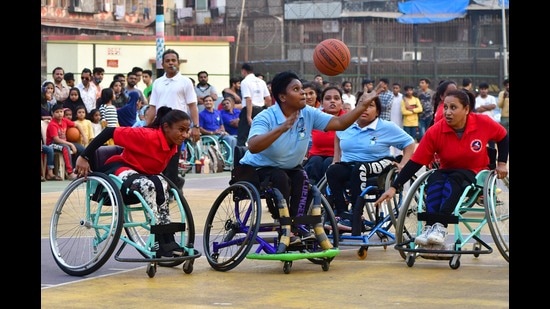
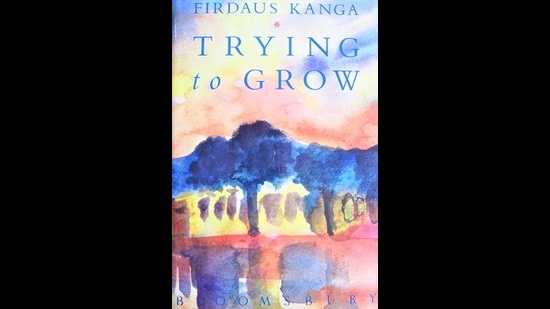
Not much has changed. However, the reaction to two books that were published last year – Homeless: Growing Up Lesbian and Dyslexic in India by K Vaishali and Abhishek Anicca’s The Grammar of My Body: A Memoir — signals that there is a definite interest in such books. That K Vaishali won the Sahitya Akademi’s Yuva Puraskar this year further establishes the growing importance of people with disabilities speaking their truth.
On being boxed in
On her win, Vaishali notes that “as a dyslexic writer with dysgraphia, reading and writing are such constant struggles that one never thinks about being good at it — it’s always something that you get done, hoping that it’s meaningful for somebody. So, winning the Sahitya Akademi award was unbelievable because I struggle to call myself a ‘good’ writer because something so laborious can’t be a talent, right? You consider something that comes very easily to you as talent.”
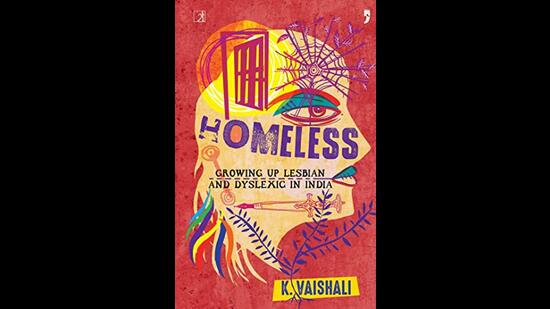
She hopes her book will bring some material change. “I received a letter from Manish R Joshi, Secretary, University Grants Commission (UGC), New Delhi, congratulating me on my book. It was so unexpected to hear from somebody who’s in charge of making policy-related changes, and I’m just wondering if my book leads to concrete consequences — perhaps some new guidelines? — then nothing like it! You never realise words have so much power; that books can go anywhere and do so much. This recognition has led to so much dialogue, so I’m grateful,” she says.
Things might have changed but misrepresentation is still rife in an environment where ableism dictates the patterns of cultural consumption, resulting in literature and films catering more to the cishet-ableist gaze. Shonali Bose’s much celebrated Margarita with a Straw (2014) is a case in point.
“When the movie came out, I remember joking to a friend that somebody has made a movie about me. I was excited but when I watched it, I felt it was lacking in everything real. It isn’t hard to notice how half-heartedly the intersection is explored in the movie,” says Vaishali, adding that it was like “someone imagined what our lifestyle is like and cooked a story about it, thinking it’ll start a dialogue.” She believes the insincerity of the film contributed towards creating an unacceptable false narrative.
Sadly, there still aren’t enough opportunities for people to present their truth. “There should be enough grants that help writers discover how to tell their story and not only get out narratives that are ‘publishable’ — whatever that means. We need a system that facilitates the publication of more such stories. At the same time, I also feel that writing your identity boxes you. I can write another book on dyslexia, but it should come from me, and not what the market dictates,” Vaishali says.
Belonging is the core of joy
Abhishek Anicca points out that even the dynamics of friendships often change for disabled people. “Sometimes your friends stop calling you because they’ve a perception about you,” he says. The reasons are diverse. “First, you’re unmarried, and as it’s normalised to hang out with your partner and not a disabled person, you’re ruled out. Then, it’s about facilities. One of my friends lives in an apartment block that doesn’t have a lift so he said he would come and see me instead. Once I told a friend, ‘Come over, I’ll cook for you.’ ‘Why would you cook for me?’ came the response, suggesting that we could instead order takeout. Perhaps he was aghast at the idea that I’d be entering the kitchen as a disabled person. But I do cook — I like cooking. So, the imagination of what a disabled body can do is very limiting. It’s difficult for them to fit me in their heteronormative-ableist lives, so [this exclusion] happens very naturally,” he says.
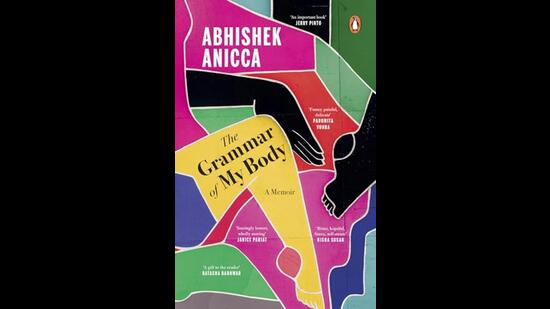
Perhaps his friends are afraid of putting in the work required to accommodate his friendship. “They don’t want to get involved with someone emotionally outside their heteronormative relationships. Secondly, if you’re a miserably disabled person, people might not enjoy your company. But that’s the thing: I’m a good socialiser! People enjoy my company, but they can’t after a point because I’m distorting their notion of how a disabled person conducts his life. I am not telling them any sob story. I’ve also heard people who perceived me as able-bodied in 2010 saying that I’m faking [my disability] and that whatever I’m doing is nothing but woke activism. Sometimes I think about what I could’ve achieved with this. Only two things — attention and getting laid. Mujhe dono nahi mila hai! (I haven’t gotten either!),” he chuckles.
When the conversation veers to trauma porn and disabled joy, Anicca shares some insights into the challenges of socialising and community-building. “Disabled people also end up internalising a lot of experiences of being discriminated against. Every denial and every betrayal is hinged on our disability, and results in self-hate to the extent that we become experts on it. Even within the disabled community circle, there’s no shared culture but a lot of ego and trauma dumping,” he says.
While it’s essential to bond over shared experiences, it often it results in “who had it worse.” “Whenever I’ve tried to date someone, it has been unsuccessful because of this reason; this huge ego that I’m a bigger victim than you,” he says adding that he is disinterested in being drawn into competitions of who had it worse. “I want to seek a relationship for pleasure — emotionally not only physically. But disabled joy is a very complicated thing. It’s definitely not what you see on social media or in movies like Margarita with a Straw,” he says adding that his idea of joy “is having a day when I don’t feel small; when I am not ill; when I can make my breakfast.”
Anicca resists attempts at infantilisation. “I’d rather become a bad disabled person than a pitiful disabled person,” he says. “Our experiences are so negative that the non-occurrence of negative stuff becomes a marker of joy! Really, belonging is the core of joy. If you don’t feel like you belong and that you are validated, you automatically feel less empowered.”
He believes disabled individuals are afraid of sharing the bare truth about their lives. “It creates hindrance in their chance of living a normal life. Who wants to know that I’m wearing a diaper? But I did write about it because I knew it would never get written about otherwise,” he says. Annica believes that any dependency or loss of control makes the person “less of a human” in the eyes of the able bodied. This is not reflected in literature or cinema. “Semi-fictionalised works like Kanga’s are trying to project an image,” he says. “Be it Kanga getting laid with men and women in Sixth Happiness (1997) or [Kalki] Koechlin’s same-sex relationship in MWAS, the writers and directors knew how their movies would be perceived culturally, so perhaps they wanted that image that disabled people can have and experience joy too. The problem is the gaze. Though affirming, these are sanitised narratives. Everything “dirty” is put under the bed. No everyday routine is shared. Imagine you never find disabled people using or going to the toilet! That’s extremely important. I sometimes feel people should instead watch and write about Saajan (1991) and Salim Langde Pe Mat Ro (1989) because in these movies, the disabled person was much more than their disability in their story arcs.”
On pushing for diverse narratives
“Abhishek Anicca is such a sheer force, a fresh and radical voice with so much tenderness, love and vulnerability to offer when baring his own lived experiences for readers,” says Chirag Thakkar, currently Associate Publisher at Bloomsbury India, who was Anicca’s commissioning editor at Penguin Random House India and helped bring his book into the world.
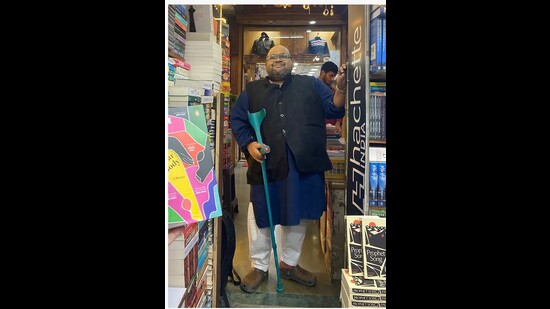
“At the same time, he rejects becoming inspiration porn in his writing. He doesn’t want to be seen as somebody who has made it ‘despite’ his disability and chronic illness. I learnt so much from editing and publishing his book — his acute sense of self-awareness, the slippery slope that is identity politics, and that there’s no need to be so stoic through life’s raging sorrows,” he adds.
Despite the long way we’ve travelled from Kanga’s Trying To Grow, even today, few in the publishing industry push for voices as radical and fierce as Anicca’s. “It was difficult to pitch this at acquisition meetings because it isn’t a [conventional,] guaranteed bestseller or one that flies off the shelves. The sales team had its apprehensions and I had to speak to its commitment to genuinely wanting greater diversity, equity and inclusion in what and how we publish. Anicca’s manuscript circulated between many inboxes at publishing houses in India long before it landed in mine. From the get-go, I knew this was a book I absolutely must publish. We in the publishing industry remain complicit in our ableism. We need to do so much more to ensure that our workplaces are more diverse and include people who bring with them their life worlds and cosmologies,” says Thakkar who concedes that the market has a brutal identity slot logic to it. “There’s no telos to the representation debate. What matters is doing better than we did last year; looking for new voices; platforming and publishing those who don’t have easy launching pads,” he says.
Founder-publisher of Yoda Press, Arpita Das, who has helped publish narratives that mainstream publishing houses deliberate on before reluctantly agreeing to publish them, reflects on the changing publishing scene.
“When I was in high school, I remember reading Kanga’s Trying to Grow — a splendid piece of auto-fiction about a young disabled gay man coming into his own. It came out in 1990, and Ravi Dayal published it. That book blew my mind. Some 20 years later, I felt a similar excitement reading Jerry Pinto’s Em and the Big Hoom (Aleph Book Company, 2012). As a commissioning editor and publisher, I know these are difficult narratives to write. At the same time, when they do get written, they strike a deeply resonant chord. Hopefully, as more such stories are told, more publishers will go looking for these stories. Indie presses love intersectional narratives and narratives that tell things differently; they constantly want to veer away from anything formulaic. So, naturally, they go looking for these stories first,” she says.
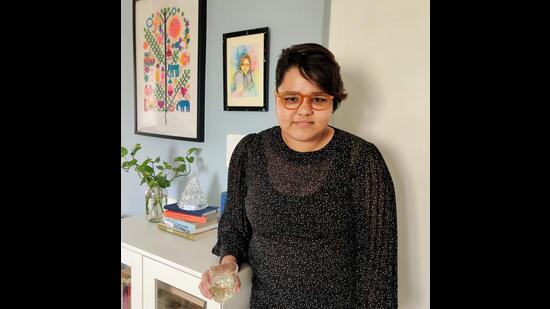
“I brought up Kanga and Pinto because that is what I was reminded of when reading Vaishali’s first chapter when she joined my writing workshop and when I worked with her as a writing mentor. She had this crystal clear singular voice which folded in startlingly insightful poignancy with a laugh-out-loud wry humour. I loved that, and knew at once this was something I wanted to publish,” she notes on helping publish Vaishali’s memoir.
We need disabled everything!
The author of 2024 Lammy finalist in the Gay Memoir/Biography category, Leg: The Story of a Limb and the Boy Who Grew From It (Trapeze, an imprint of the Orion Publishing Group, 2023), Greg Marshall says that disability and queerness have much in common. “They’re natural bedfellows because they’re both about negotiating the space between the body and the outside world: desires, expectations, [and] even employment,” he says, adding that he has learned a lot from being gay. “I learned that difference can, in some instances, translate to a kind of freedom, the shirking off of societal expectations, [and] a willingness to get jiggy with it. Queer liberation provides a good starter kit for self-discovery and expression. So, to me, the way you bring about more literary works at the intersection of queerness and disability is to make sure you’re bringing your physical body into your work. Don’t forget that you and your characters, be they real or imagined, have physical bodies (along with their desires) that lead them to move about the world in particular ways,” he says.
![“I’d say the way to capture more disabled joy is to give people living with disability the chance to tell [their] own stories in as unfettered and authentic a way as possible” - Author Greg Marshall “I’d say the way to capture more disabled joy is to give people living with disability the chance to tell [their] own stories in as unfettered and authentic a way as possible” - Author Greg Marshall](https://images.hindustantimes.com/img/2024/07/19/550x309/0b4600a4-45d3-11ef-b778-ccbb1a42d7e3_1721397661121.jpg)
According to Marshall, while “disabled joy [isn’t] wholly missing from popular culture, it’s too often overlooked or made to fit a familiar script, one that involves being inspiring to able-bodied people, teaching tidy morals, or overcoming adversity.” All that makes sense but like disabled creators, like all creators of cultural artefacts everywhere, want to be useful, to be read and to have an audience. “Finding an audience often means meeting the culture where it’s at, leaning on the most sanguine, digestible versions of ourselves. But I’d say the way to capture more disabled joy is to give people living with disability the chance to tell [their] own stories in as unfettered and authentic a way as possible,” he says, adding “We don’t just need disabled joy. We need disabled everything: humour, complexity, intimacy, trouble, [and] ordinariness.”
This is something that the ableist establishment needs to recognise and embrace by bringing more diversity into the cultural world, into what’s published and what’s presented on screen, among other fora. “We have to trust that our stories are necessary — and then we have to go about creating them,” says Marshall.
With time, the rest of the world should be able to catch up.
Saurabh Sharma is a Delhi-based writer and freelance journalist. They can be found on Instagram/X: @writerly_life.





